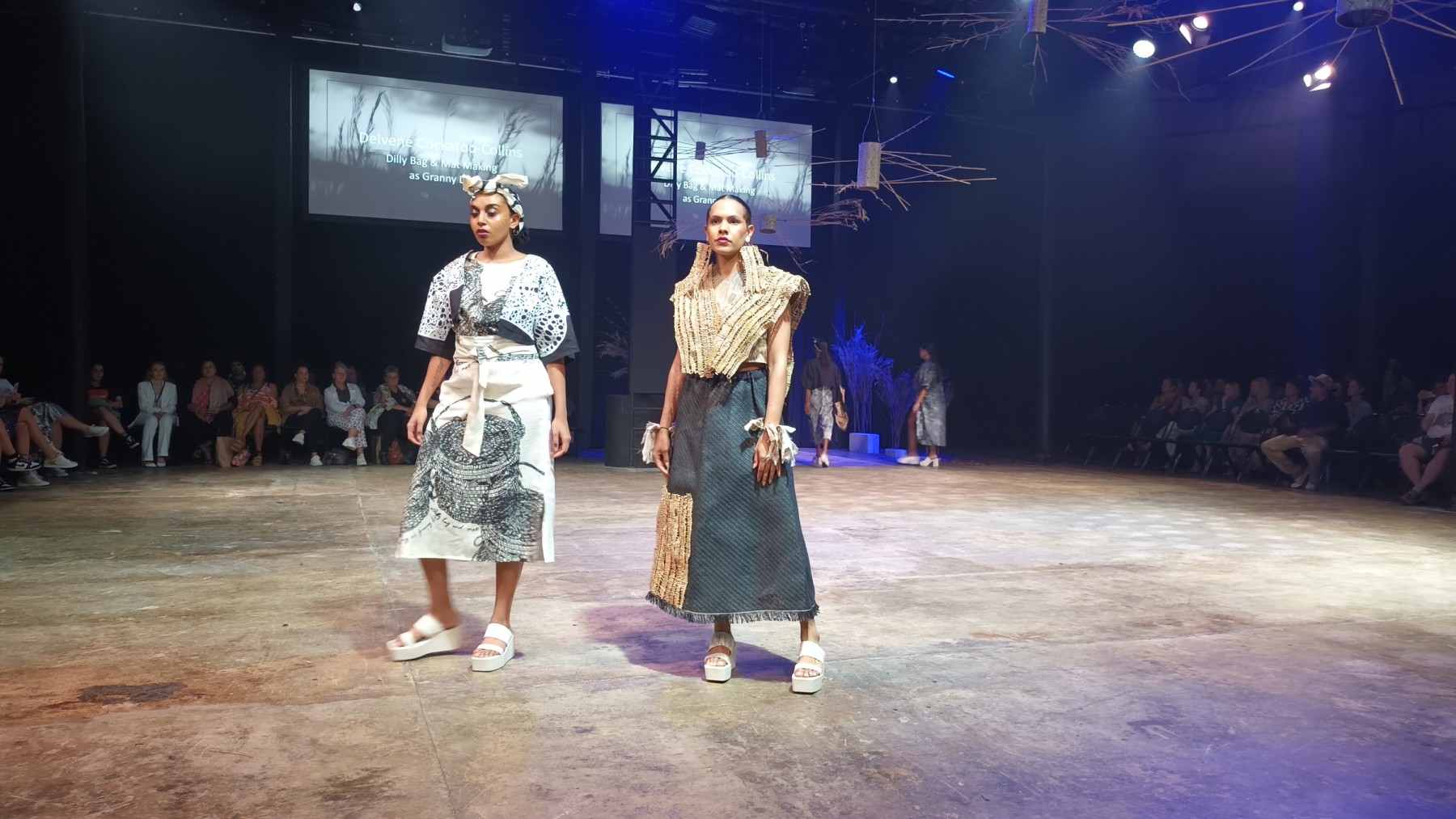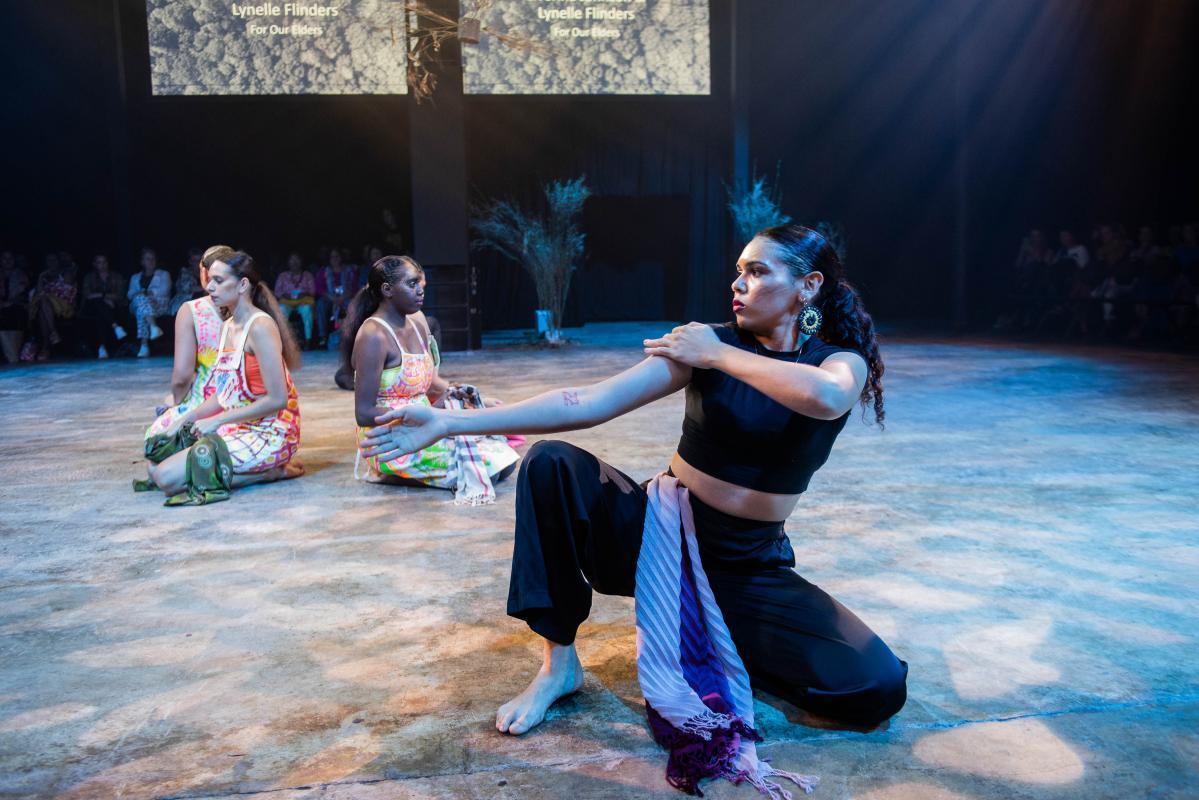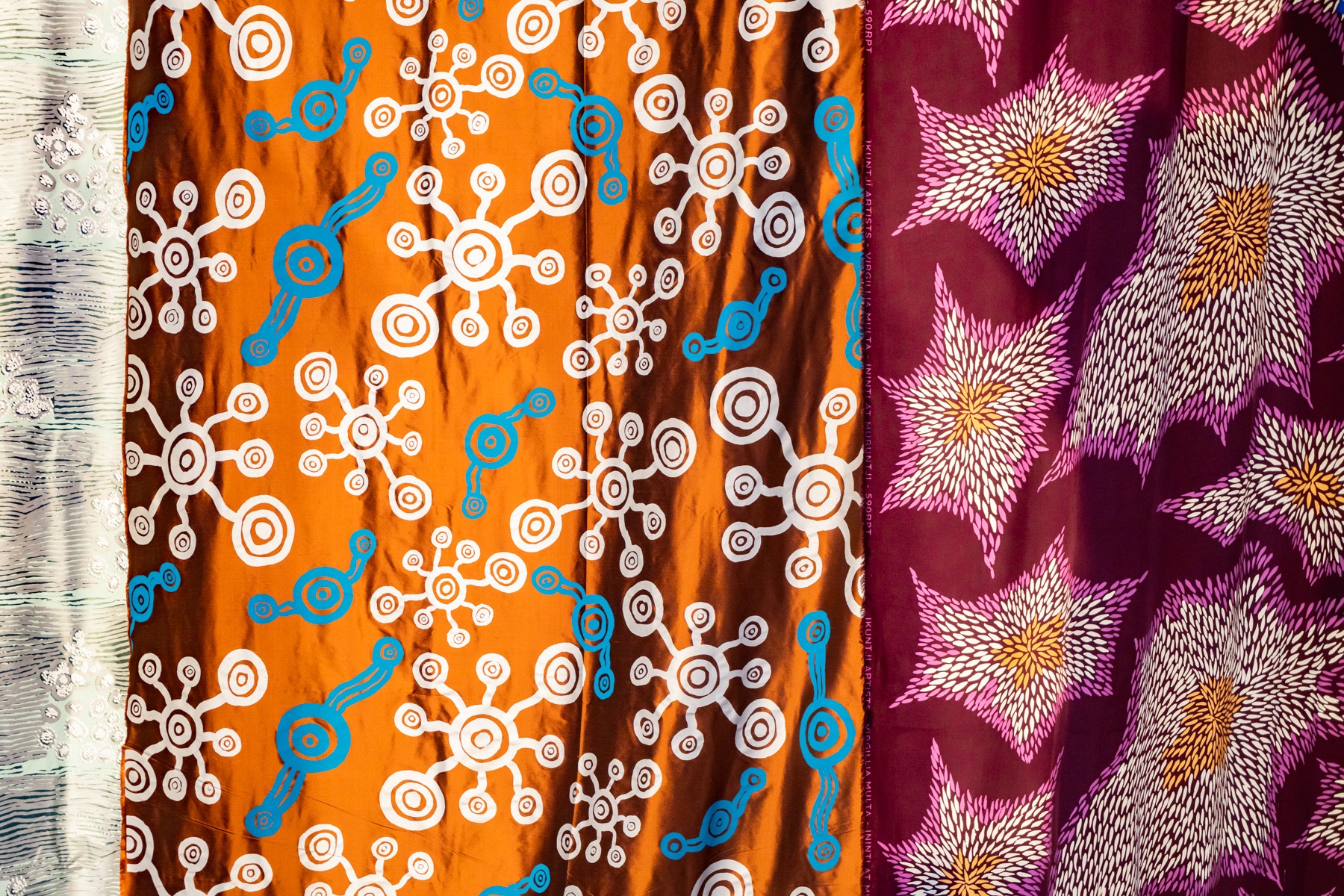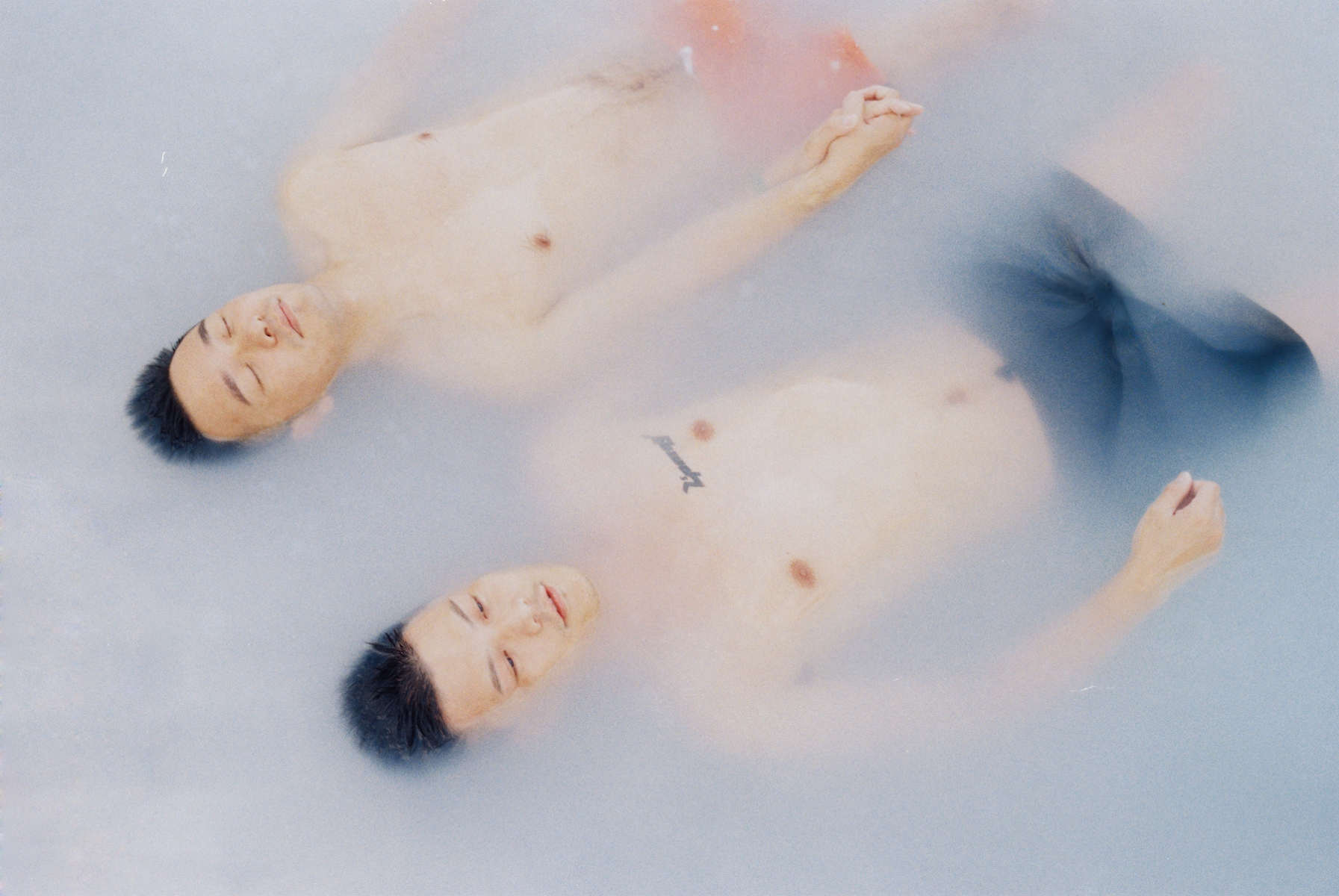Cairns Indigenous Art Fair (CIAF) is an annual celebration that strengthens and celebrates Aboriginal and Torres Strait Islander cultures, using art as a tool for cultural exchange.
CIAF’s 2023 fashion show, Woven, was curated by Lynelle Flinders, and explored the legacy of our ancestors, stitched into the fabric of our lives today. What matters to us most, as Indigenous Australians, was represented loud and clear as the models commanded the floor of the historical Tanks Arts Centre. There was an air of excitement as the lights dimmed, the music started, and the first silhouette of a dancer emerged from behind the curtains.
I have volunteered backstage for CIAF’s fashion show in the past, so I could envision the huge, bustling team awaiting the models when they returned backstage for outfit changes. There is a sense of unity backstage, which is clear as the models interact on the catwalk. Acknowledgement of one another is cleverly choreographed in. This makes for an entirely unique take on fashion, one where clothing unites us with cultural practice and lore.
Acknowledgement of people and place displayed on CIAF’S runway is a stark contrast with mainstream fashion shows where models hardly interact. Woven reminded me that, as Indigenous Australians, we all come from different places and speak different languages, but we are all interwoven and connected. When given an opportunity like CIAF, our cultures, differences, and similarities weave together as one. And the result is unforgettable.
This year’s NAIDOC theme, “For Our Elders,” was the title of designers Elverina Johnson and Lynelle Flinders’ opening collection, which coupled dance with vibrant, celebratory hand-printed fabric. It contrasted with Jedess Hudson’s collection of earth-tones, traditional feathered head pieces, and woven dilly bags titled “Jedindi Bijarril—To Dream.” Felicity Chapman’s “Woven Medicine” was an elegant continuation of earth-tones, reminiscent of the healing qualities of the land. In her collection “Oochunyung,” Fiona Wirrer-George presented an unexpected mirage of colour and large-scale Aboriginal-printed designs, which had an abstract feel. Models held coordinating handbags and umbrellas—the audience appreciated the attention to detail of this collection.
Collection themes ranged from food, like Simone Arnol and Holly McInnes’ “Guyu, Lemon and Rice,” which brought in lemon-coloured material screenprinted with black and white fish, to “MaSung” by Robert Pau, with “Symbols of Sovereignty, Law, Faith, Monarch, Culture and Defense.” Pau’s collection delivered something entirely new: tropical prints often associated with “Island Dresses,” were used in conjunction with attire associated with the British Monarchy. A royal purple contrasted with the black and white of the Torres Strait Dari headdress. Together, the models were a force to be reckoned with.
Every collection that graced the runway was drenched with symbolism and references to cultural lore as passed down through generations. Yarrabah Arts and Culture Precincts’ collection, “Yarrabah Affirmations,” included deep red tones in romantic, formal pieces, as dancers weaved their way through the floor. Two models wore beige pieces with deep red text spelling words like: NOW, NATION, ALWAYS, 1967, VOICE, GENOCIDE AND TREATY. The text served as a reminder of our history, a symbol of colonial reality, as well as the intergenerational trauma embedded into our DNA.
Natural fibers were used by Delvene Cockatoo Collins’ collection “Dilly Bag and Mat Making as Granny Did.” Shells and bark mixed with cotton and tulle to create stunning wearable art. A stand-out was Elverina Johnson’s collaboration with Taking Shape. Together, they used netting and stretch materials, some holographic and some neon pink, to create a swimwear meets streetwear line-up. Lynelle Flinders, who was this year’s fashion performance curator, wrapped up the catwalk with her collection “Sown in Time,” which was full of timeless pieces, reminders that fashion is a relic of both time and place.
Dancers returned to the floor to close out the show with traditional and contemporary choreography by Mikelle and Jadyn Bingarape. This was paired with impressive acrobatics. Models joined, now in plain black clothing, and told a story of coming together like individual threads of a fabric; a fabric that holds the sacred knowledge of our ancestors, as we as Indigenous peoples explore new ways to pass this knowledge on to others. CIAF Fashion show has always been representative of who we are as Aboriginal and Torres Strait Islander people, and as Australians. If you are an Indigenous person, you will feel both represented and celebrated by this runway. Congratulations to the 14 designers, 18 models, and all involved. You delivered a show to remember for years to come!
This review was Guest Edited by Kamilaroi man, Darby Jones. Jones is a Meanjin-based writer and editor. He has written for The Jacaranda Journal and Beyond Queer Words and was recently shortlisted for Kill Your Darlings’ “Creative Non-Fiction Essay Prize.” He drinks too much coffee, worships Joan Didion, and dreams about living in New York City.
CIAF coverage was generously supported by a Cairns Regional Council grant and Lemonade readers: Emma Crott, Easton Dunne, Jocelyn Flynn, Grace Herrmann, Kellie O’Dempsey, and Lucinda Wolber. The Regional Arts Development Fund is a partnership between the Queensland Government and Cairns Regional Council to support local arts and culture in regional Queensland.
Jessica McKechnie-Hart is a poet and writer. Her clans are Thiithaarr-Warra, Ankamuthi and Munthi-Warra from Cape York Peninsular.








